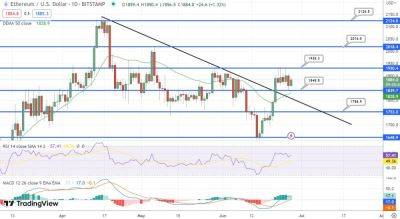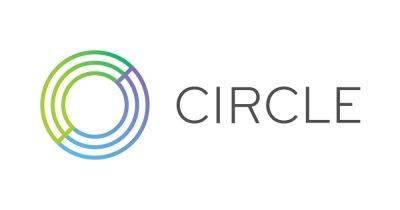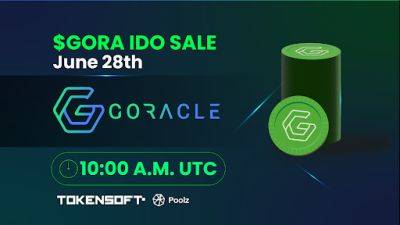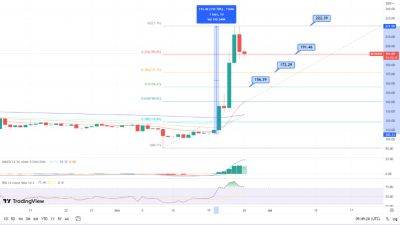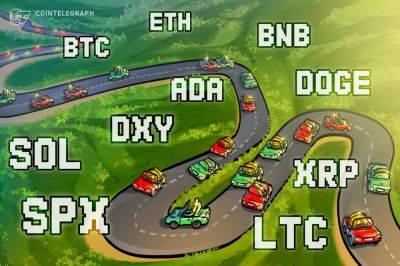3 reasons why Ethereum’s market cap dominance is on the rise
Ethereum has been the dominant smart contract and decentralized application (Dapp) network since its inception. An analysis based on Ether’s price (ETH), and its market capitalization, shows indisputable evidence that the blockchain has been gaining market share over time.
As shown above, Ether’s dominance in market capitalization terms grew over the past couple of years, from an 18% average in July 2021 to the current 20%. Excluding Bitcoin (BTC) from the analysis, Ether’s market share presently stands at 40.6%, while the next competitor, BNB, holds a 7.2% share.
This shows the disparity from the leading Dapp-focused network to the incumbents, which is also evident when analyzing the total value locked (TVL) on each network’s smart contracts. Ethereum is the absolute leader with $24.6 billion in TVL, followed by Tron’s $5.4 billion and BNB Chain’s $3.3 billion.
The above chart depicts the Ethereum network’s TVL market share declining from 70.5% in June 2021 to 49.5% in May 2022. The movement happened while Terra and Avalanche gained a combined 20% market share in smart contract deposits. However, after the Terra-Luna ecosystem collapse in May 2022, which culminated with developers halting network activity, Ethereum quickly regained a 58% market share.
Despite the emergence of Dapps on the BNB and Tron blockchains, Ethereum’s leadership has remained unquestioned over the past 12 months. This data shows the irrelevance of the total number of unique active wallets interacting with smart contracts (UAW) per chain.
For instance, according to DappRadar, WAX has 363,600 active users, followed by BNB Chain's 517,300 30-day UAW. These figures are way higher than the Ethereum network’s 66,300 unique active addresses, but they
Read more on cointelegraph.com





